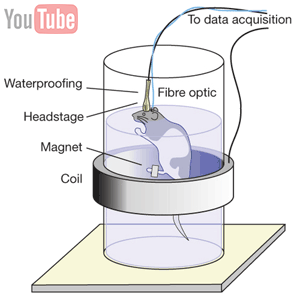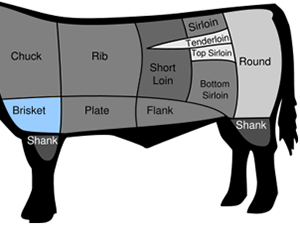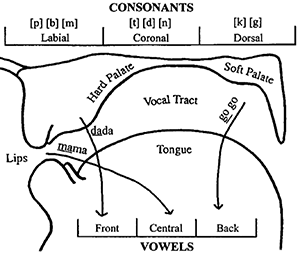Iggy Pop (b. 1947), born James Newell Osterberg, is an American musician. He is considered an influential innovator of punk rock music. He began calling himself ‘Iggy’ after his first band in high school (for which he was drummer), The Iguanas. He was lead singer/songwriter of influential protopunk band The Stooges and became known for his outrageous and unpredictable stage antics. Inspired by the antagonism of Jim Morrison, Pop was the first performer to do a stage-dive, which he started at a concert in Detroit. Other exploits of Pop include rolling around in broken glass, exposing himself to the crowd and vomiting on stage.
Osterberg was raised in a trailer park in Ypsilanti, Michigan. He began his music career as a drummer in different high school bands in Ann Arbor, Michigan. He later moved to Chicago where he played drums in blues clubs, helped by Sam Lay (formerly of the Paul Butterfield Blues Band). In 1968, he and his new band, ‘The Stooges,’ signed with Elektra Records, again following in the footsteps of The Doors, who were Elektra’s biggest act at the time. Reportedly, Pop called Moe Howard to see if it was alright to call his band ‘The Stooges,’ to which Howard responded by merely saying ‘I don’t care what they call themselves, as long as they’re not the Three Stooges!’ and hung up the phone).
Iggy Pop
Optogenetics
Optogenetics is a neuromodulation technique employed in neuroscience where light pulses are used to activate and deactivate neurons which have been genetically sensitized to photons. It employs a combination of techniques from optics and genetics to control and monitor the activities of individual neurons in living tissue—even within freely-moving animals—and to precisely measure the effects of those manipulations in real-time. The key reagents used in optogenetics are light-sensitive proteins.
The earliest approaches were developed and applied in the lab of Gero Miesenböck, now Waynflete Professor of Physiology at the University of Oxford, and Richard Kramer and Ehud Isacoff at the University of California, Berkeley; these methods conferred light sensitivity but were never reported to be useful by other laboratories due to the multiple components these approaches required. A distinct single-component approach involving microbial opsin genes introduced in 2005 turned out to be widely applied. Optogenetics is known for the high spatial and temporal resolution that it provides in altering the activity of specific types of neurons to control a subject’s behavior.
Barbecue
Barbecue [bahr-bi-kyoo] (BBQ; ‘barbie’ in Australia and New Zealand; ‘braai’ in South Africa) is a special type of grill. It is also a way to prepare meat which is then cooked with that instrument. Barbecue cooking means to cook very slowly. It is not as hot or fast as standard grilling. Some meats must be cooked slowly to be tender, and easy to chew. Sometimes, meat may be slowly cooked for 8 to 24 hours in a barbecue. People in the United States barbecue chicken, beef and pork, depending on the part of the country.
Barbecuing is very popular in the Central and Southern U.S., especially in Texas with beef and Kansas City with pork. In the United States barbecued meat is usually covered in barbecue sauce, a type of thick, dark red sauce that often contains spices, tomatoes, and honey. Very often, American barbecue grills get heat from hickory wood. In California, it was common to barbecue beef in a hole in the ground rather than a grill. This is called a ‘pit barbecue.’
read more »
Brisket
Brisket [bris-kit] is a cut of meat from the breast or lower chest of a cow. The beef brisket is one of the eight beef primal cuts. The brisket muscles include the superficial and deep pectorals. As cattle do not have collar bones, these muscles support about 60% of the body weight of standing/moving cattle. This requires a significant amount of connective tissue, so the resulting meat must be cooked thoroughly to tenderize the connective tissue.
The term derives from Old Norse ‘brjósk,’ meaning cartilage. The cut overlies the sternum, ribs and connecting costal cartilages. Popular brisket recipes in the Southern United States include rubbing with a spice rub or marinating the meat, then cooking slowly over indirect heat from charcoal or wood. This is a form of smoking the meat. Additional basting of the meat is often done during the cooking process.
read more »
Burnt Ends
Burnt ends are flavorful pieces of meat cut from the point half of a smoked brisket. A traditional part of Kansas City Barbecue, burnt ends are considered a delicacy in barbecue cooking. Either the entire brisket is cooked whole, then the point end removed and cooked further, or the point and flat are separated prior to cooking. Due to the higher fat content of the brisket point, it takes longer to fully cook to tender and render out fat and collagen. This longer cooking gave rise to the name. Sometimes when the flat is done, the point is returned to the smoker for further cooking. Some cooks re-season the point at this time.
Kansas City style burnt ends are usually served cubed with sauce either on top or on the side. A ‘proper’ burnt end should display a modest amount of ‘bark’ or char on at least one side. Burnt ends can be served alone (sometimes smothered in barbecue sauce) or in sandwiches, as well as in a variety of other dishes, including baked beans and gumbo.
International Phonetic Alphabet
The International Phonetic Alphabet (IPA) is an alphabetic system of phonetic notation based primarily on the Latin alphabet. It was devised as a standardized representation of the sounds of all spoken languages. The IPA is designed to represent only those qualities of speech that are distinctive in spoken language: phonemes (‘a sound uttered,’ the smallest segmental unit of sound – e.g. the ‘k’ sound in ‘kite’), intonation (variation of pitch while speaking which is not used to distinguish words, unlike tone, which is), and the separation of words and syllables.
To represent additional qualities of speech such as tooth gnashing, lisping, and sounds made with a cleft palate, an extended set of symbols called the Extensions to the IPA may be used. The IPA currently contains 107 letters derived from thousands of languages.











